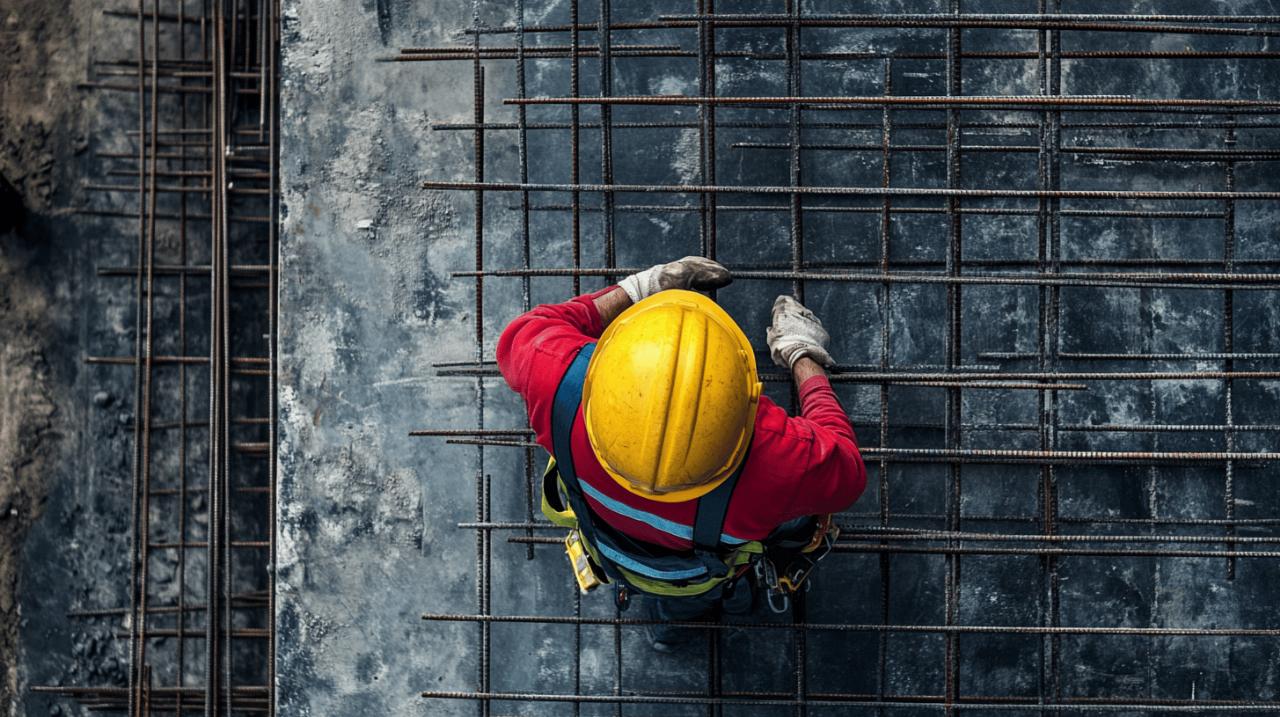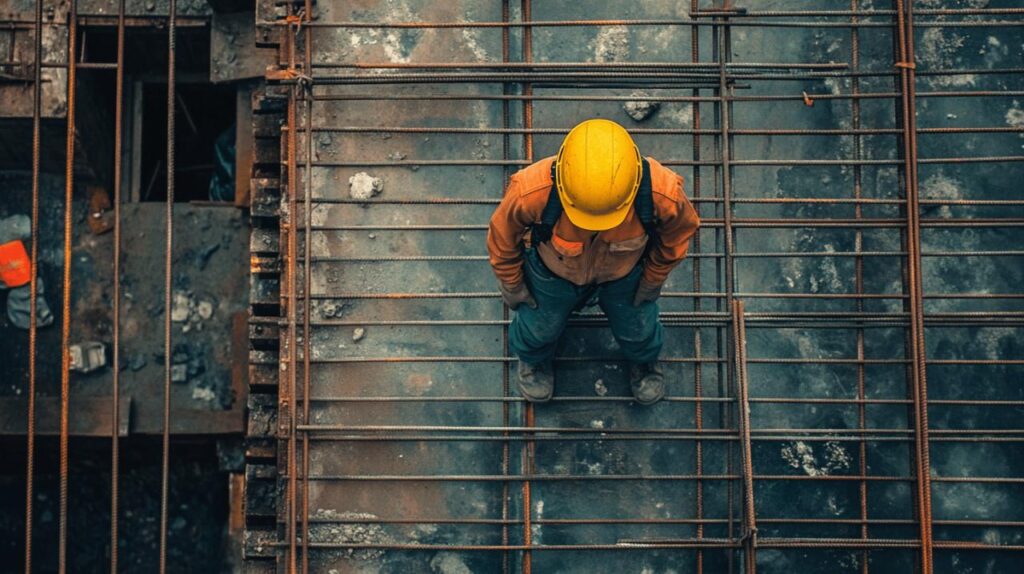Construction sites are among the most hazardous work environments, requiring specific safety measures to protect workers from various risks. Proper personal protective equipment (PPE) forms the foundation of on-site safety protocols, helping to significantly reduce workplace injuries and fatalities. This comprehensive guide examines the essential safety equipment needed on construction sites, explaining why each item matters and how it should be used to ensure maximum protection.
Head and face protection
Head injuries can be catastrophic on construction sites, which is why proper protection is non-negotiable. According to safety statistics, construction workers not using appropriate PPE are three times more likely to suffer injuries. The expertise from Scuola Edile Rimini emphasises that head protection should always be the first consideration when establishing safety protocols for any construction project.
Hard hats and their features
Hard hats serve as the primary defence against falling objects, bumps, and other head-related hazards. They must comply with safety standards and bear the appropriate CE marking as mandated by the Personal Protective Equipment Regulations 2002. Effective hard hats should be in good condition, fit properly, and come from reputable suppliers. While regulations typically require hard hats on construction sites, it's worth noting that turban-wearing Sikhs have a specific exemption under Section 11(1) of the Employment Act 1989, though they must still wear other required PPE.
Eye and face guards
Eye protection is crucial on construction sites to shield workers from airborne debris, metal shavings, chemical splashes, ultraviolet light, and electrical arcing. Safety glasses, goggles, and face shields offer varying levels of protection depending on the specific hazard. These protective items should be comfortable enough for extended wear while providing comprehensive coverage against potential dangers that could cause temporary or permanent vision impairment.
Visibility and identification
With heavy machinery and vehicles regularly operating on construction sites, ensuring workers remain visible is vital for preventing accidents and maintaining site safety.
High-visibility clothing requirements
High-visibility clothing is mandatory where vehicles or plant machinery are in operation. For routine site activities, high-visibility tabards may be sufficient, but workers involved in temporary traffic management require more comprehensive protection, including long-sleeved jackets and trousers. The responsibility for providing this equipment typically falls to the employer, with specific standards depending on the nature of the work being performed and environmental conditions.
Site identification systems
Beyond simply making workers visible, identification systems help organise and manage construction sites effectively. These systems might include colour-coded hard hats or vests to distinguish different trades or roles, visitor identification protocols, and clear signage throughout the site. Such measures ensure that unauthorised personnel don't enter dangerous areas and help supervisors quickly identify who should be where.
Foot and leg protection
The risk of foot injuries from falling objects, punctures, and slips makes appropriate footwear essential on construction sites.
Safety boots standards
Safety footwear must offer protection against dropped objects and punctures, typically through steel toe caps and puncture-resistant soles. Employers are legally required to provide basic safety footwear at no cost to workers, provided the equipment is properly maintained. These boots generally need replacement every 6-12 months depending on usage. Site-specific regulations may prohibit certain types of footwear; for instance, rigger boots might be banned on some sites due to increased ankle injury risks, while lace-up boots are unsuitable for licensed asbestos work.
Protective leg wear
Beyond footwear, leg protection is necessary in environments with specific hazards. Work trousers designed for construction offer protection against cuts, grazes, and splinters while providing additional pockets for tools and equipment. For specialised tasks like using chainsaws or working with chemicals, additional leg protection may be required to prevent serious injuries.
Hand and arm safety
Hands are constantly exposed to hazards on construction sites, making appropriate protection critical for preventing injuries.
Types of protective gloves
Different construction tasks require specific types of gloves. Options include cut-resistant gloves for handling sharp materials, thermal gloves for temperature extremes, and chemical-resistant gloves for handling hazardous substances. When selecting gloves, factors such as dexterity, insulation, cut/puncture risks, chemical/electrical exposure, and vibration protection must be considered to ensure workers can perform their tasks safely and effectively.
Arm guards and sleeves
Some construction activities require protection beyond the hands. Arm guards and sleeves protect against cuts, abrasions, burns, and chemical exposure when the forearms are at risk. These protective items should be compatible with gloves to ensure complete coverage without restricting movement or creating gaps in protection.
Fall prevention systems
 Falls remain one of the leading causes of construction fatalities, with OSHA regulations specifically addressing fall protection for heights of six feet or more.
Falls remain one of the leading causes of construction fatalities, with OSHA regulations specifically addressing fall protection for heights of six feet or more.
Harnesses and anchoring points
Fall arrest systems, including harnesses and lifelines, are essential when working at elevation. These systems must be properly fitted, regularly inspected, and securely anchored to appropriate points. Workers should be trained in the correct adjustment and use of harnesses, understanding that improperly worn equipment may fail to prevent injuries in a fall situation.
Guardrails and safety nets
Collective fall protection measures like guardrails and safety nets provide protection for multiple workers simultaneously. These systems should be installed according to specific standards and regularly inspected to ensure they remain effective. The hierarchy of fall protection typically prioritises these collective measures before individual protection like harnesses.
Respiratory protection
Construction sites often expose workers to airborne hazards that can cause immediate or long-term respiratory problems.
Dust masks and respirators
Basic dust masks provide protection against non-toxic dust and particles, while respirators offer defence against more hazardous substances. The appropriate respiratory protection depends on the specific contaminants present, concentration levels, and duration of exposure. Proper fit testing is essential to ensure respirators create an effective seal, particularly for workers with facial hair or unusual facial features.
Air-purifying equipment
For environments with higher concentrations of contaminants, more sophisticated air-purifying equipment may be necessary. These systems use filters or chemical cartridges to remove specific hazards from the air before it's breathed. Workers should understand filter replacement schedules and limitations regarding oxygen-deficient environments where supplied air might be required instead.
Equipment maintenance
Even the highest quality safety equipment will fail if not properly maintained and regularly inspected.
Inspection schedules and procedures
All safety equipment should undergo routine inspections according to manufacturer recommendations and regulatory requirements. These inspections should check for damage, wear, and proper functioning, with results documented for compliance purposes. Workers should also perform quick visual inspections before each use to catch obvious defects that might compromise protection.
Replacement criteria
Clear guidelines should establish when equipment must be replaced rather than continued in service. Factors including visible damage, excessive wear, expiration dates, and exposure to certain chemicals or conditions often necessitate replacement. For example, hard hats typically need replacement every 2-5 years depending on conditions, while respiratory filters may require changing after a single use in some environments.
Safety training programmes
Safety equipment is only effective when workers understand how to use it properly and recognise its limitations.
Equipment usage training
Comprehensive training should cover the selection, proper use, adjustment, and limitations of all safety equipment. This training should be hands-on whenever possible, allowing workers to become comfortable with their equipment before facing real hazards. Refresher training should be provided periodically to address any questions or issues that arise during actual use.
Emergency response preparation
Workers must understand not only how to use safety equipment preventatively but also how it functions during emergencies. Training should cover scenarios like evacuating while wearing respiratory protection, responding to a co-worker's fall while they're suspended in a harness, or handling equipment failures. This preparation ensures workers can respond effectively rather than panicking when emergencies occur.





